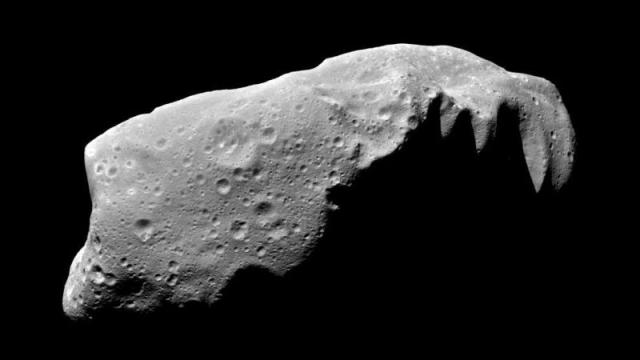Every few months, a journalist asks a scientist about the looming threat of Armageddon. That scientist’s quotes are then predictably blown out of proportion and turned into some iteration of “The End Is Nigh”. In light of Asteroid Day, which was yesterday, we’d like to clarify some of the apocalyptic misinformation that’s spreading. As badly as we all want an asteroid to strike us squarely in the face at this point, that probably won’t be happening any time soon.
Image: NASA/JPL
Hyperbolic headlines aside, now is an great opportunity to talk about asteroids and their impact on Earth — no pun intended. On 30 June 1908, an asteroid between 50m and 70m in diameter exploded in Earth’s atmosphere over Siberia in an incident known as the Tunguska Event. Though the object was relatively small by asteroid standards, it still caused a lot of damage, flattening 80 million trees and destroying roughly 2000km2 of forest.
It’s 30 June also #AsteroidDay On this day in 1908 the Tunguska event occurred. PD pics. pic.twitter.com/BWzSzhBOrB
— David Blanchflower (@DavidBflower) June 30, 2017
The anniversary of the Tunguska Event is therefore the perfect time to check in on asteroids, and what’s being done to prevent Earth from being struck by one. According to Professor Alan Fitzsimmons, an astronomer at the Queen’s University Belfast Astrophysics research centre, scientists are not worried about anything big any time soon. My sincere apologies to everyone hoping for a different outcome.
“There is quite a lot being done to prevent the Earth being stuck by a big asteroid, say half a kilometre across or larger,” Fitzsimmons told Gizmodo. While we know about most of the bigger asteroids, or Near Earth Objects (NEOs), in our solar neighbourhood, smaller NEOs are the biggest immediate asteroid threat to certain regions on Earth, which is why scientists are trying to hunt them down.
“The past two decades have seen continuous sky surveys (almost all by the United States) find 90 per cent of the Near-Earth Asteroids bigger than a kilometre across, and many of the sub-km asteroids. So that’s a whole bunch of asteroids we’re pretty safe from in the next 100 years.”
Fitzsimmons added that European and American scientists already have some ideas on how to handle a big asteroid, should we detect one on a collision course.
“If we do find one, there have been many advanced studies in Europe and the USA on how to deflect a large asteroid — [or] change its orbit around the Sun — so that if it was on an intercept trajectory it misses us instead. Unfortunately it’s not known how well these technologies work as we have yet to test them, but on paper it looks possible with today’s technology.”
Indeed, many scientists are working on asteroid deflection techniques, some of which involve lasers, which is objectively awesome. NASA and the ESA have teamed up for a joint mission called Asteroid Impact and Deflection Assessment (AIDA), which will try and change the course of an asteroid in space.
#OTD 1908: the Tunguska Event, believed to be the explosion of a meteor, flattened nearly 80 million trees. #AsteroidDay pic.twitter.com/5XkXeJpfbg
— NASA History Office (@NASAhistory) June 30, 2017
Honestly, the best way to celebrate Asteroid Day is by watching Armaggedon (1998) and drinking a piña colada. If you really want to be stressed about something today, just read the news.
“At present there are no big asteroids which are likely to hit us in the next 100 years,” Fitzsimmons said. “So we still have to go to work and it’s still worthwhile to take out a pension for your old age!”
Sigh.
